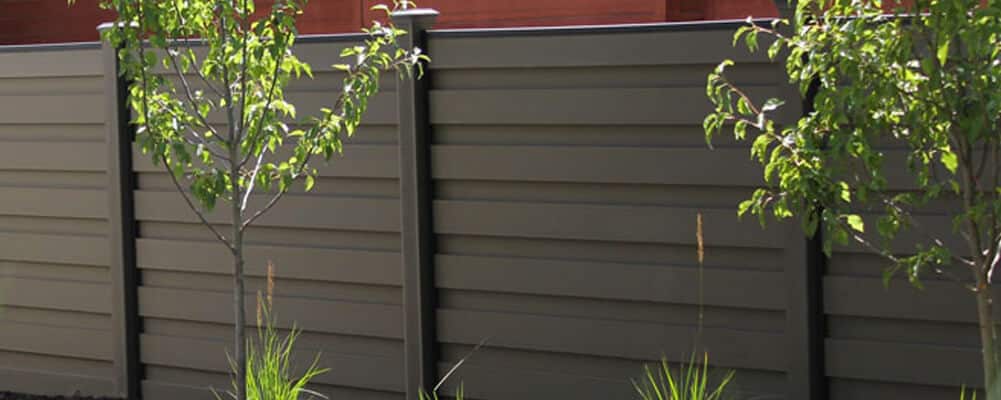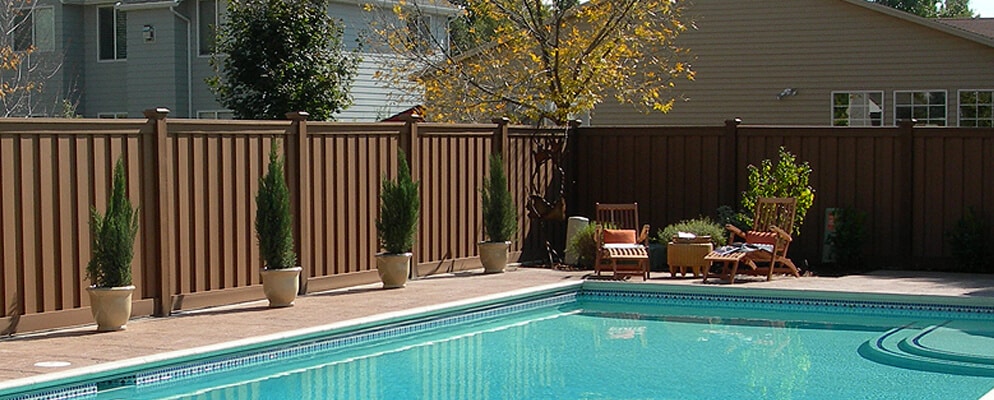Building a fence goes beyond marking boundaries; it symbolizes privacy, safety, and property value enhancement. But how much does it cost to build a fence? This seemingly simple question hides complexities influenced by material choices, labor rates, and DIY considerations. Delve into the financial journey of erecting barriers, from charming picket fences to secluded privacy barriers. We meticulously dissect expenses associated with materials, labor, and various fence styles like split rail, providing insights to help you make informed decisions without overspending.
Composite Fencing Costs Explored
When you’re thinking about giving your backyard a makeover, a fence isn’t just a boundary—it’s a part of your home’s character. Opting for Trex fencing becomes a captivating choice precisely because it intertwines with the essence of your home’s ambiance. Let’s walk you through what makes it tick and how much it might set you back.
Why Choose Trex Fencing?
The first thing to know is that composite fences, like those made by Trex, are in another league compared to traditional wood or vinyl fences when we talk durability and maintenance. Imagine having the rustic charm of wood without its susceptibility to weathering or the low-maintenance appeal of vinyl without looking too plastic-y—that’s where Trex steps in.
This blend of style and practicality does come with its price tag. Depending on the quality and design complexity, composite fences can vary significantly in cost. But before sticker shock gets you, consider this: these costs cover material prices known for their longevity and ease-of-care benefits—meaning more weekends spent relaxing instead of staining or repairing.
In terms of numbers? You’re looking at an investment starting from $29.50 to $47.36 per linear foot installed—a figure that encapsulates both material price and labor costs for professional installers who bring experience (and possibly some magic) into making your fence dreams come true without turning them into DIY nightmares.
Labor rates also play their part; they typically range between $30-$80 per hour depending on local rates as well as project complexity—with gate installations adding anywhere from $200-$600 based on size and design features.
Labor Costs and Professional Installation Insights
When it comes to building a fence, the question of going DIY or hiring a professional is often at the forefront. Diving into the specifics of labor expenses and choosing your path requires a nuanced understanding.
Labor rates for fence installation can vary widely, generally falling between $30 to $80 per hour. The variability in this spectrum is influenced by numerous elements such as the intricacy of your undertaking and the prevailing wages in your area. For those considering adding a gate, remember this will bump up your budget by an extra $200 to $600.
Deciding whether to hire professionals or take on a fence install as a DIY project boils down not just to cost but also time investment and skill level. Professional contractors bring efficiency, expertise, and equipment needed—all things that speed up installation while ensuring quality work.
If you’re leaning towards hiring pros for your fencing needs—whether it’s composite fencing like Trex or another material—it’s crucial to factor in these labor costs early in planning your budget. Keep in mind that choosing experienced contractors could mean fewer headaches down the road with repairs or adjustments due to improper installation techniques used by less skilled workers.
To conclude, as you deliberate between the DIY route and hiring professionals, it is important to consider not just the upfront costs and time investment for each, but also the enduring quality of your fence project before choosing one.
Calculating Your Fence Installation Costs Accurately
Transforming your backyard with a Trex composite fence is like giving your home a stylish makeover—it must fit impeccably, look stunning, and stay within your budget. To achieve this perfect balance, understanding the costs upfront is essential.
Factors Influencing Your Project’s Budget
The cost of installing a Trex fence depends on various factors. Size is a significant factor; whether you’re installing a petite picket fence for your front yard or covering a sprawling estate with privacy panels, the size greatly impacts the overall cost. Additionally, location plays a role, as labor rates vary between bustling cities and quiet suburbs. Lastly, fencing materials range from economical chain-link to premium composites like Trex.
Labor Costs and Professional Installation Insights
While DIY installations can save you money, professional installers offer speed and expertise, ensuring your fence remains sturdy and straight through all weather conditions. Labor costs typically range between $30 and $80 per hour, with gate installations adding an additional cost.
Utilizing Cost Calculators for Precise Estimates
For precise cost estimates, utilize online cost calculators tailored for fencing projects. Input details about dimensions, desired materials (such as durable Trex composite), and location specifics to obtain a close estimate of your project costs. If you’re considering a DIY approach, Trex Fencing materials start in the low $60s per foot for a 6-foot high fence, based on an efficient layout on 8-foot centers. Our comprehensive installation instructions make DIY installation straightforward, and our team is always available to assist if needed.
Choosing Between Different Types of Fences
Finding the right fence for your yard is like picking the perfect accessory for a new outfit—it should complement your home’s style, meet your needs, and fit within your budget. But with so many options out there, from traditional wood fences to modern composite materials like Trex, how do you decide?
Wood vs Composite Fencing
Choosing between wooden and composite fences typically involves a trade-off between price, upkeep needs, and visual charm. Wood barriers, with their timeless charm and cost-effectiveness, have long adorned American gardens. However, they require regular upkeep including staining or painting to keep them looking fresh.
On the flip side, composite fencing, particularly Trex fencing, offers homeowners a low-maintenance alternative that can mimic the look of real wood without all the hassle. While initial costs may be higher—ranging significantly based on material quality—the long-term savings in maintenance make it an attractive option for those focused on durability.
Vinyl fences also enter this comparison as an affordable yet durable choice; however, they might not offer the same natural aesthetics some homeowners seek. Chain-link and wrought iron present themselves as strong contenders when security is paramount but lack privacy unless modified with additional coverings.
Metal fences provide another dimension altogether combining strength with elegance but often at a premium price point compared to other materials.
Conclusion
So, how much does it cost to build a fence? We’ve broken down the nuts and bolts of fencing costs—from materials like Trex Fencing to labor. Grasping that the type of materials selected plays a significant role in shaping your financial plan is crucial. Composite fences might hit your wallet harder initially but think long-term value.
A vital nugget of wisdom is to carefully balance the benefits and drawbacks between hiring experts for installation or tackling the project on your own. Each path has its price tag and challenges, yet knowing when to call in pros can save you from costly mistakes.
Maintenance matters too. A wood privacy fence may offer classic charm, but it demands more upkeep than composite options.
In wrapping up, remember: Building a fence involves more than just dollars per linear foot—it’s about making smart choices for both your property and pocketbook. Let these insights guide you toward a decision that marries function with financial savvy.
Reach out to Trex fencing today for more information.




